What did being stylish mean for women in 19th century India?
In 1926, Paul Louis de Giafferri, a French author and illustrator, began work on a series of booklets with the extravagantly ambitious aim of recording the world’s sartorial history from 5318 BC to the early 20th century. Over the next four years, he compiled illustrations of women’s dresses from China, Japan, Persia, central Europe, and America in The History of The Feminine Costumes of the World. Another place that featured in the 20-volume series was India.
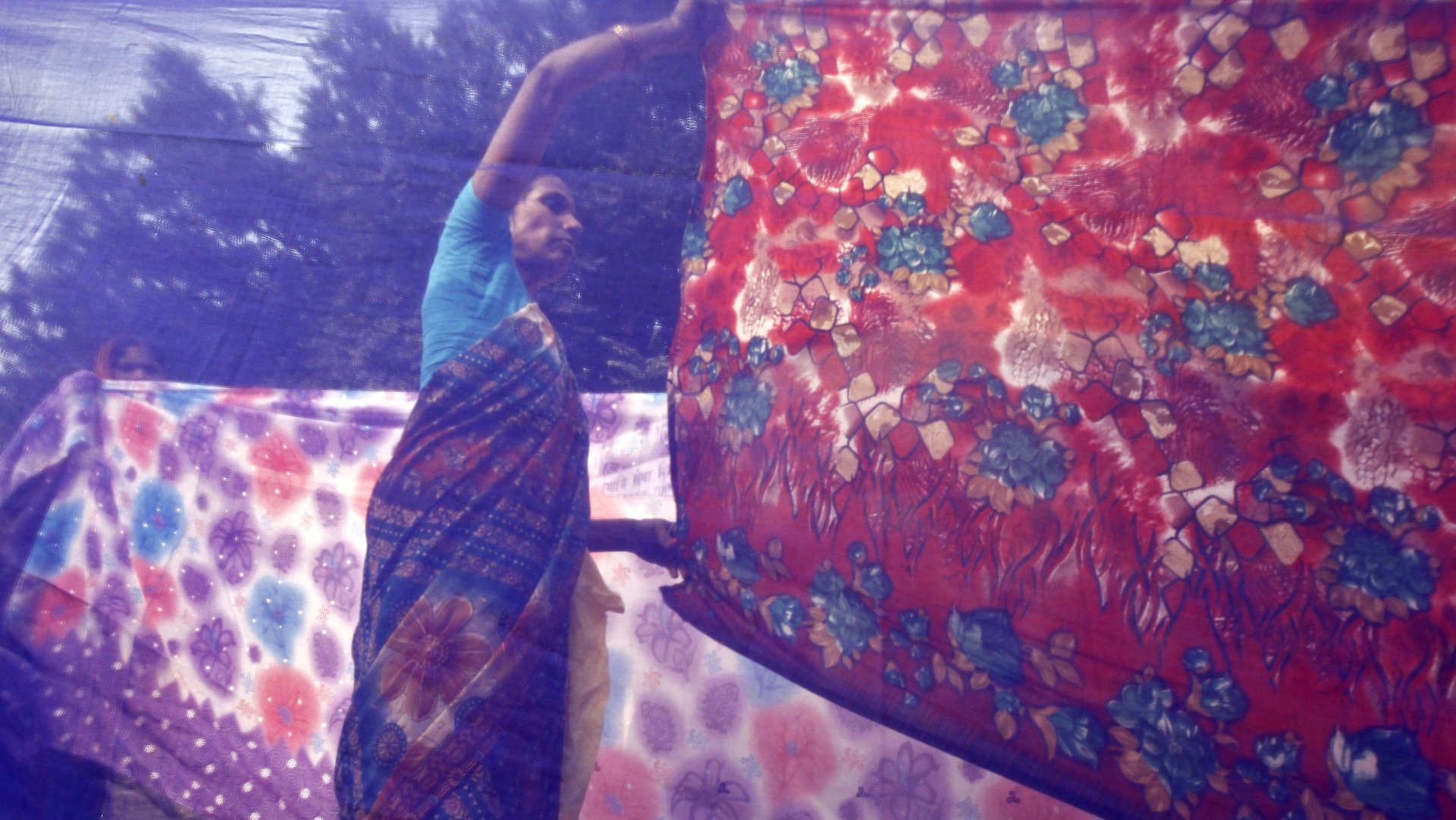

In 1926, Paul Louis de Giafferri, a French author and illustrator, began work on a series of booklets with the extravagantly ambitious aim of recording the world’s sartorial history from 5318 BC to the early 20th century. Over the next four years, he compiled illustrations of women’s dresses from China, Japan, Persia, central Europe, and America in The History of The Feminine Costumes of the World. Another place that featured in the 20-volume series was India.
In a 10-page booklet, titled The Fascination of the Indian Costume, de Giafferri shows the reader how women living in various parts of India dressed—the way a Parsi lady bunched her sari, how a high-caste Hindu woman draped hers, and how a Buddhist wore her robes.
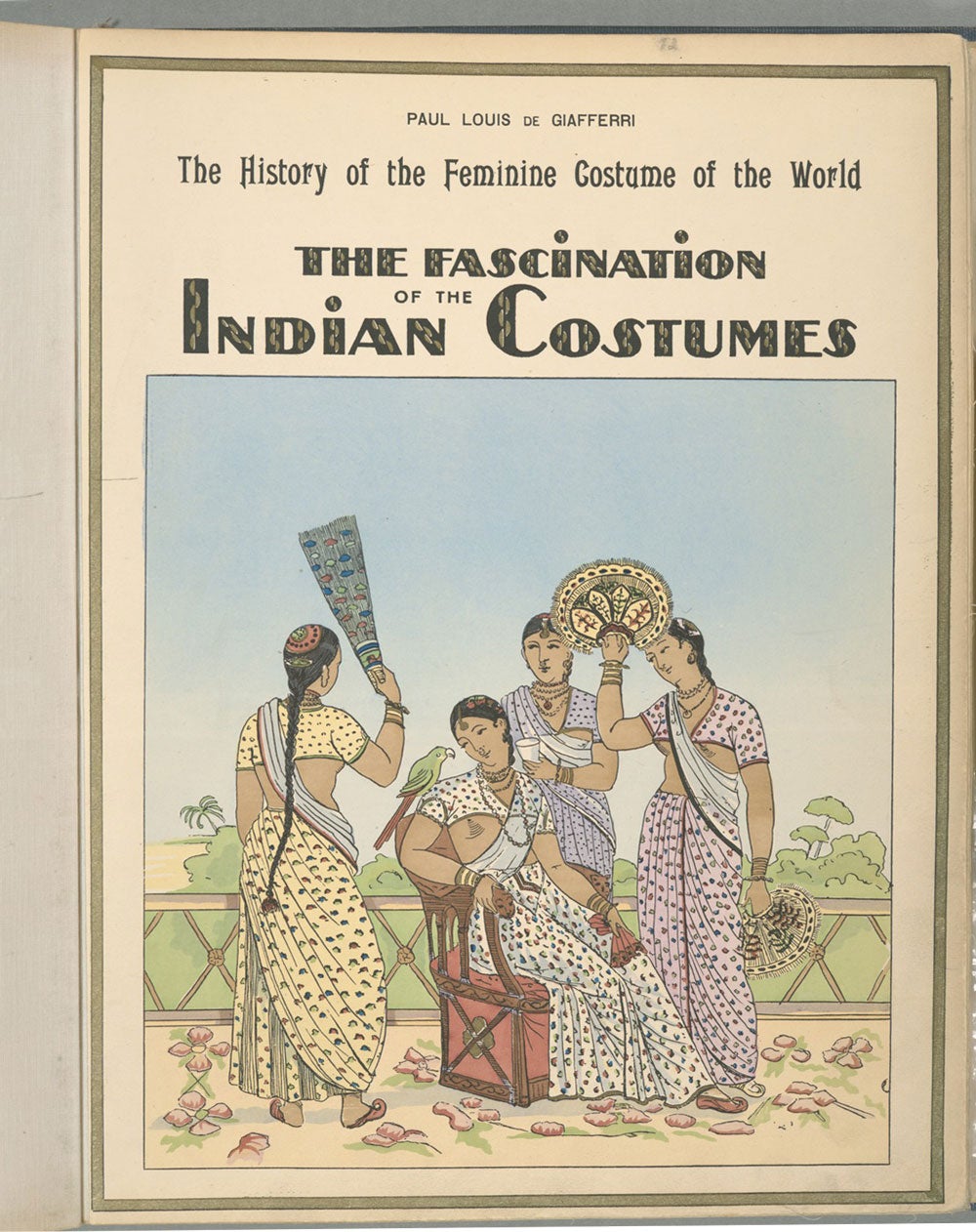
Anu Moulee, a scientist who runs the popular blog Vintage Indian Clothing, said: “The illustrator drew on various sources, like, say, reproductions of Ajanta paintings, miniature paintings, company paintings, postcards that were probably in circulation and put it together.”
The booklets, preserved at the New York Public Library’s archives, explain patterns, colours, designs and even sleeve lengths of the garments. They also feature manufacturers’ catalogues, with fabric swatches, along with sketches showing how the prints and weaves could be fashioned into seasonably stylish garments.
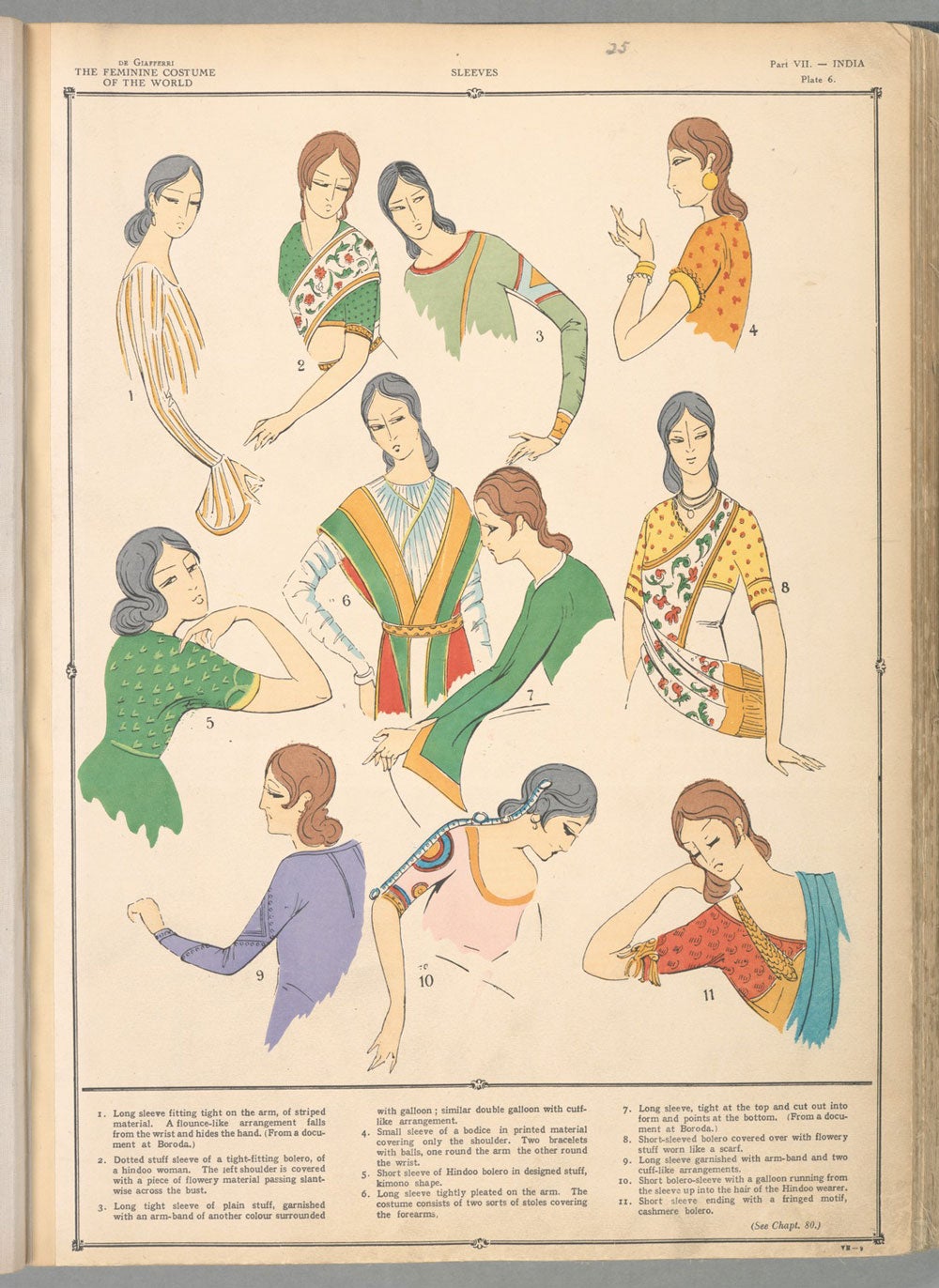
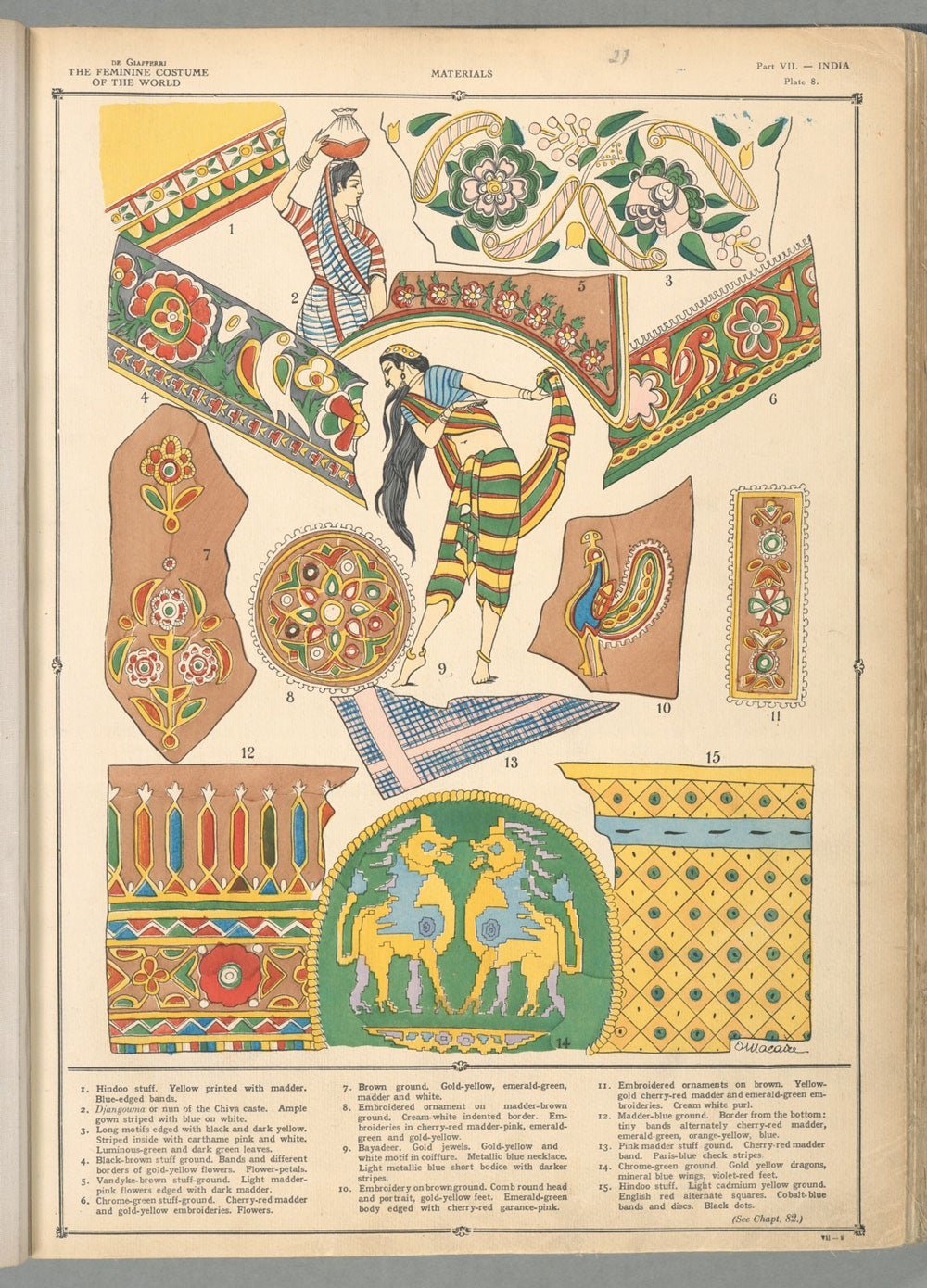
A page in the Indian booklet is dedicated to “fashionable ladies.” It shows the “cloak of the wife of Mahrajah Savai Jai Singh, the founder of Jeypore (Jaipur). Made of silk and brocaded with gold, the property of the Maharaj of Jeypore.” Another illustration here is the sari of Shachi, the wife of sun god Indra: “The coiffure differs from the former ones and is formed of a gold and red cone. The scarf covers the skirt a little and is brought in front again; white with green and red design.”
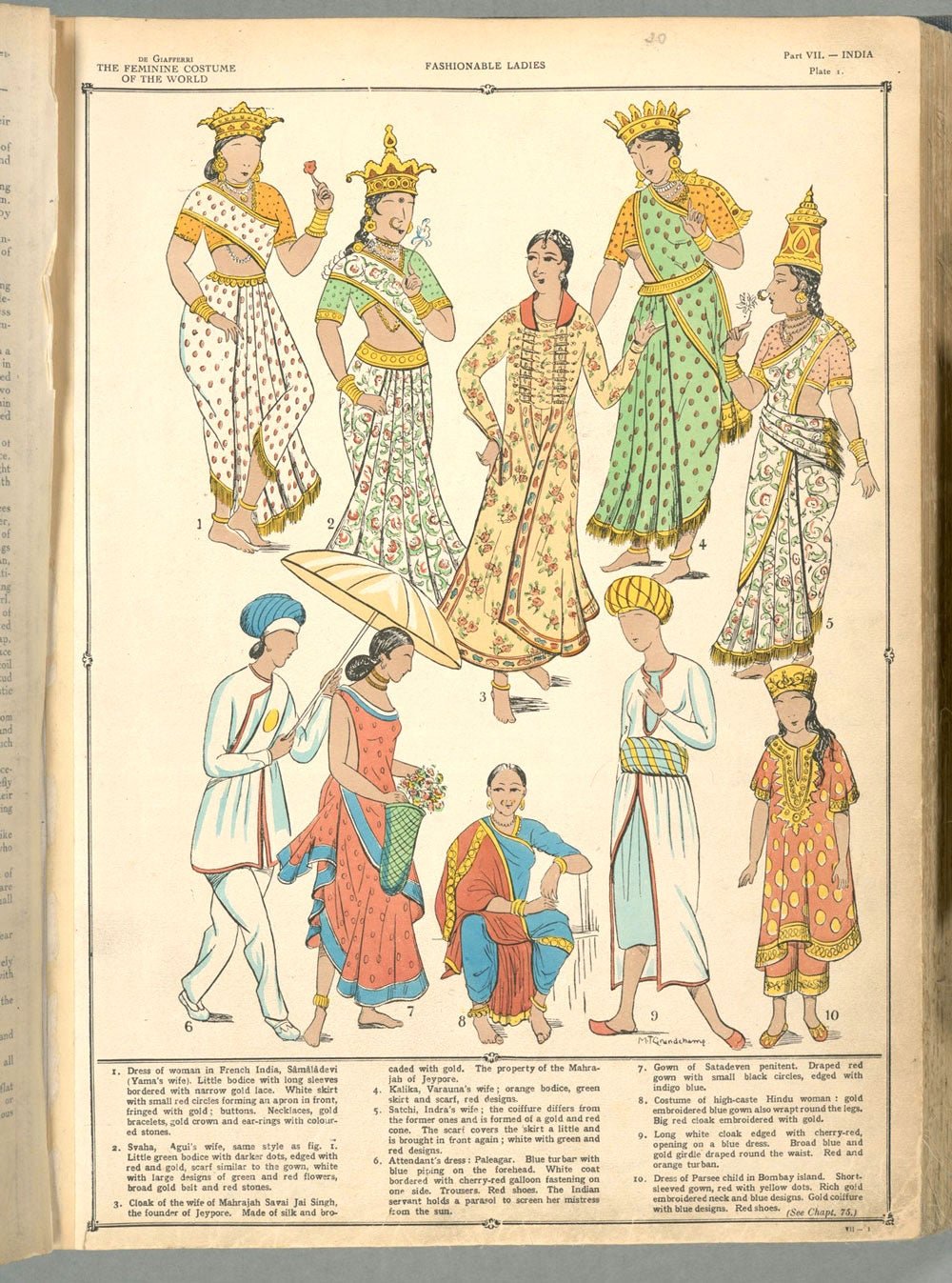
de Giafferri’s illustrations suggest a stark contrast in how the higher and lower caste Hindu women dressed. Those higher in hierarchy favoured robes and head-dresses embroidered with gold, while others dressed in plain cotton with minimal embellishments.
The booklet, Moulee says, is “a bit of the exotic east and some reproductions.” “Some of the sari styles, for example, probably owe a bit to those illustrations of castes of India, etc. that were popular in the 19th century. Others look like fanciful illustrations for trashy oriental novels.”
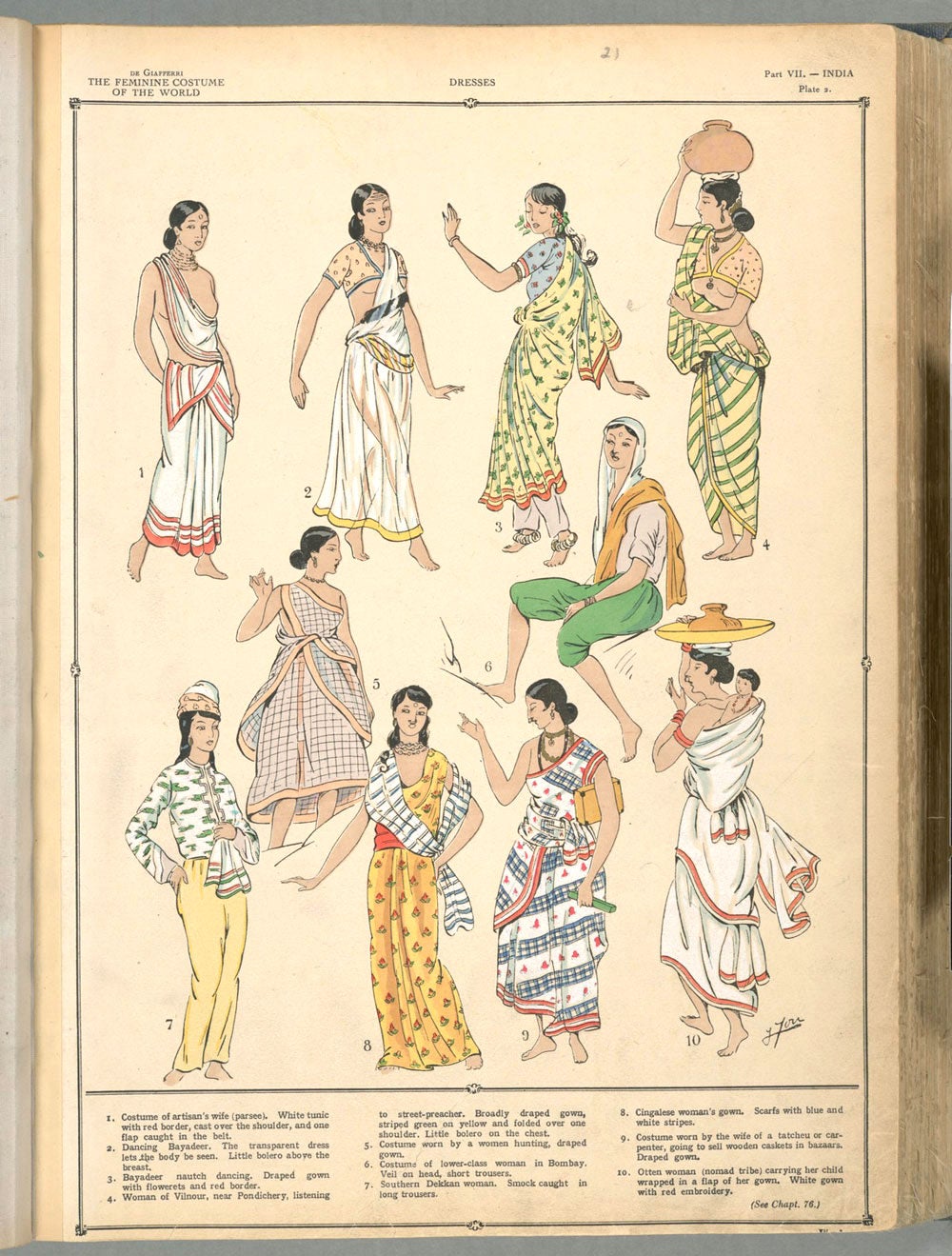
A few pages in the Indian booklet are dedicated to women’s jewellery, footwear and headgear, with an emphasis not just on style, but their material and fabrics. Some wore silk veils, while others preferred a feathered head-dress. Shoes were fashioned out of bamboo, or adorned in gold. In a blog post in 2014, Moulee had said: “Some are accurate… some are a bit whimsical and fanciful and European in execution. E.g. No. 11 in the Shoes page looks nothing like Indian fashion of 1925 or antiquity, yet wouldn’t be out of place on an Indian runway today.”
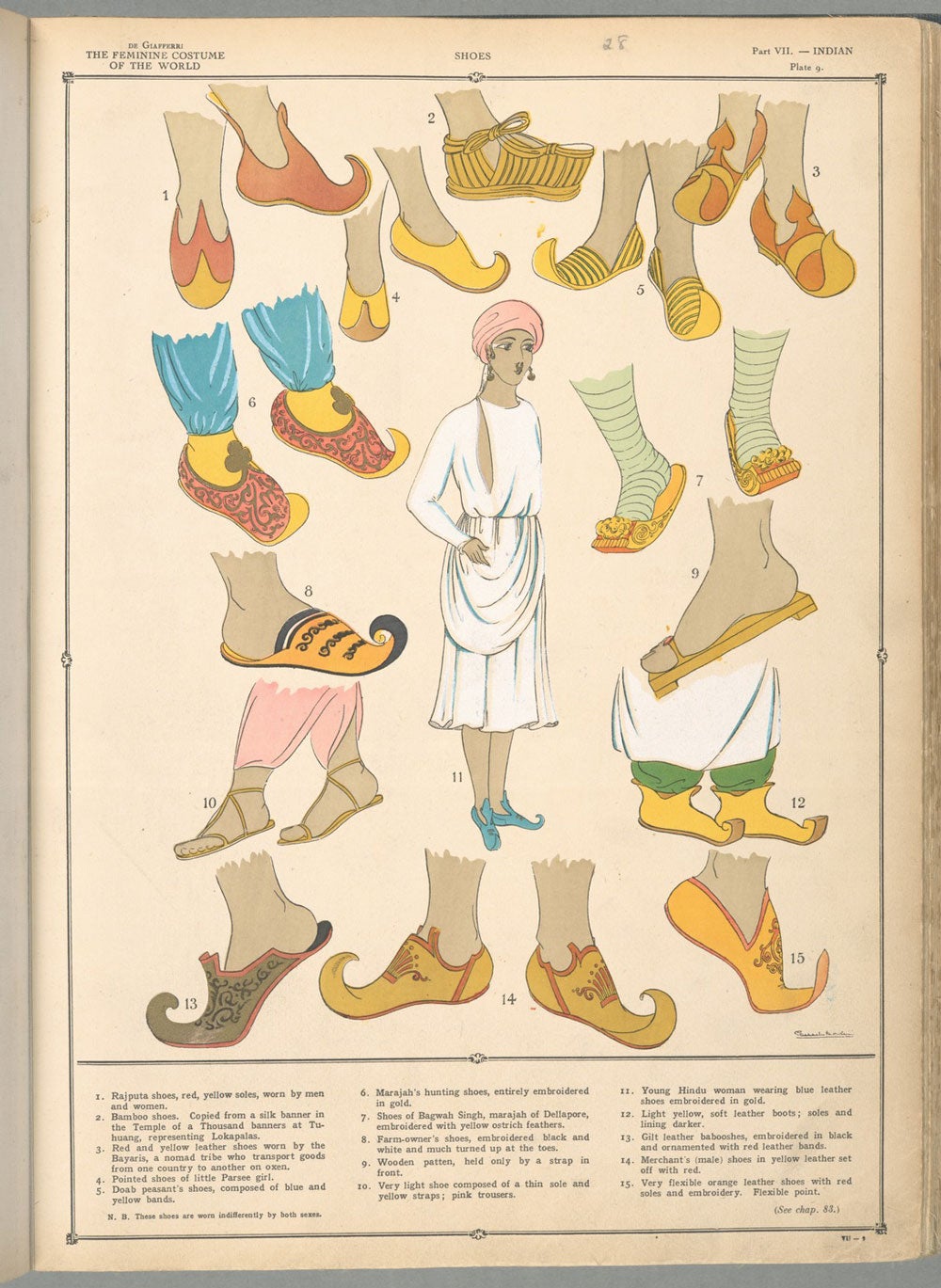
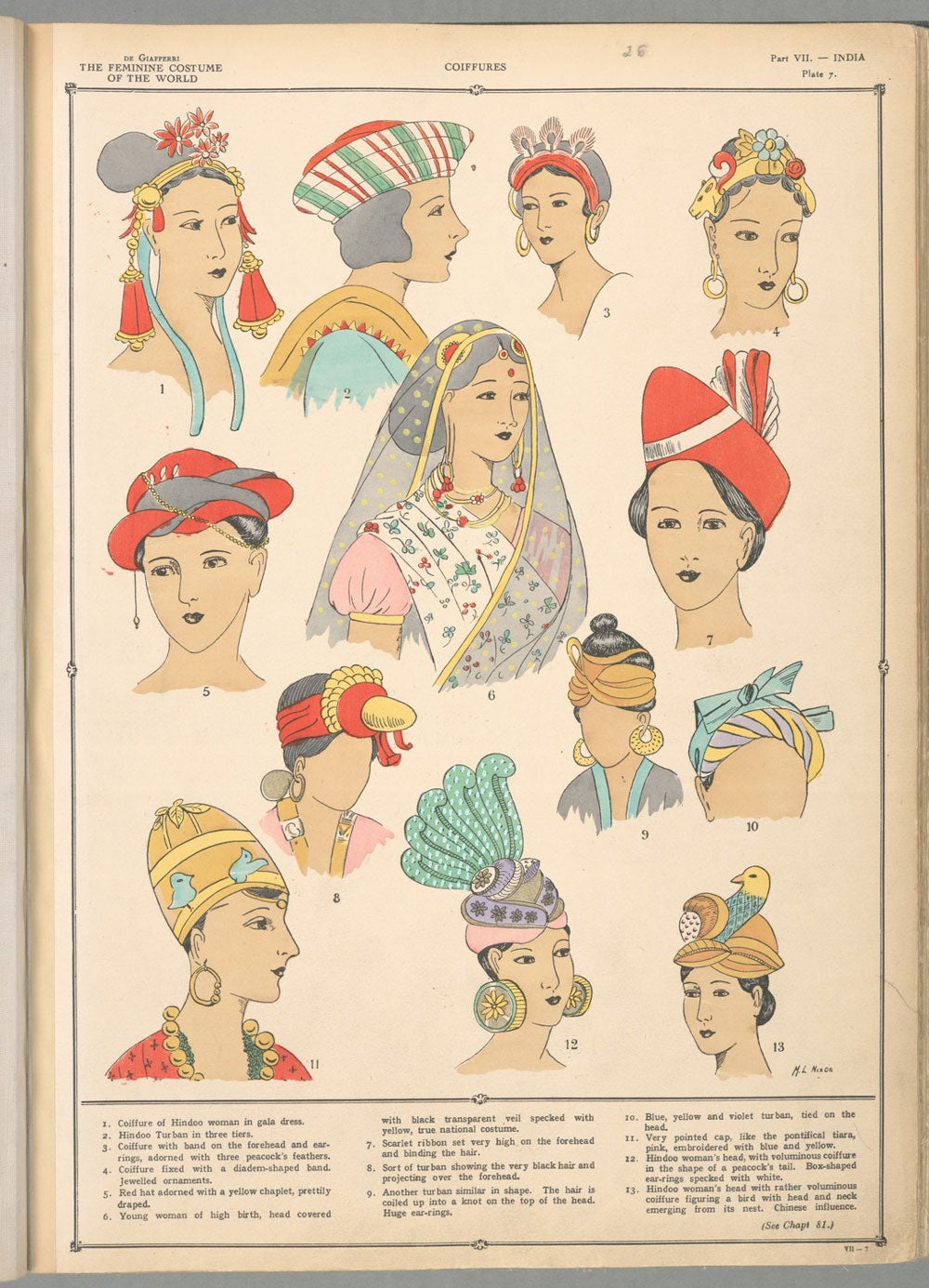
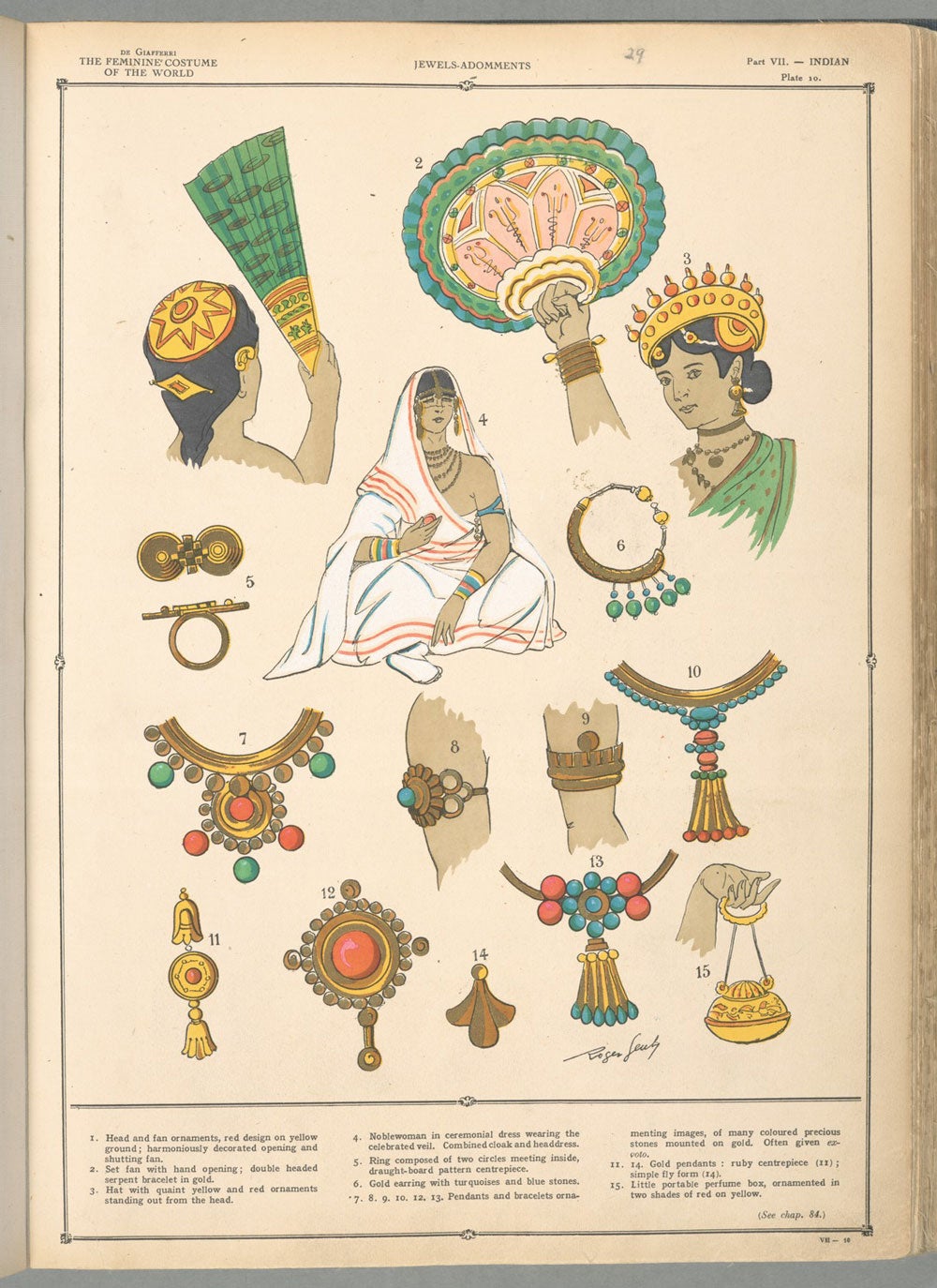
“You really cannot form a coherent picture of Indian costumes from this,” said Moulee. “Despite the captions, a foreign reader would be hard put to decide what is au courant, what is old and indeed what is high fashion.”
This article originally appeared on Scroll.in.